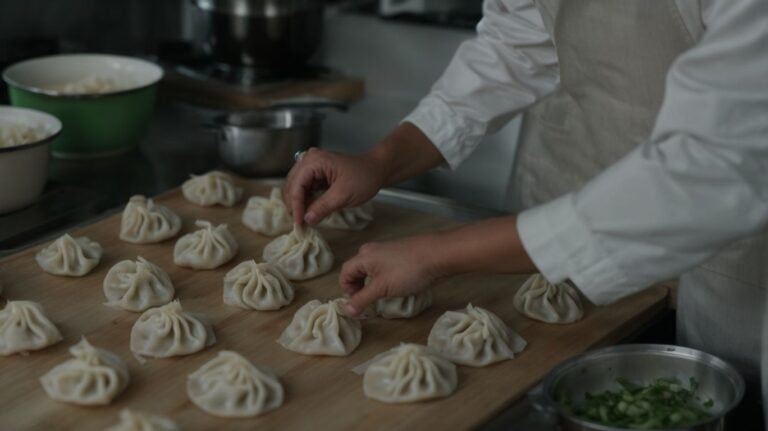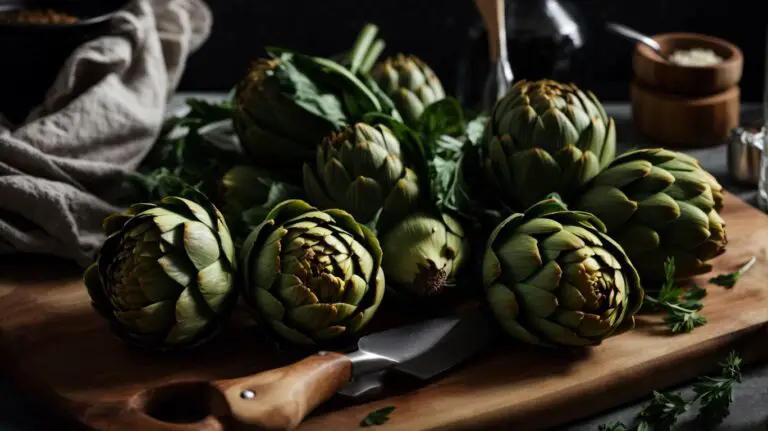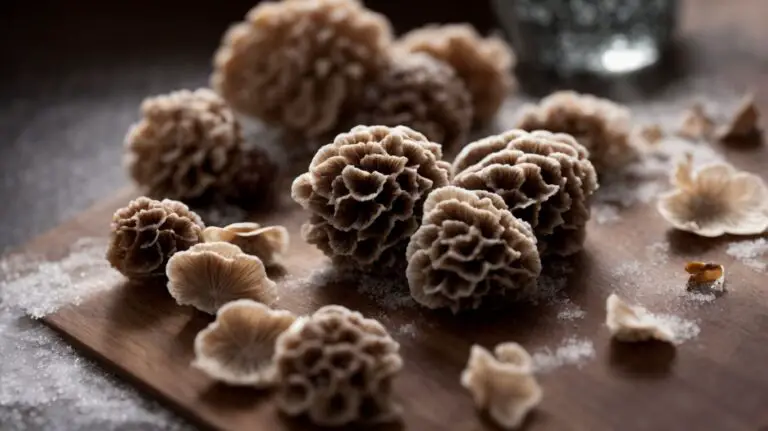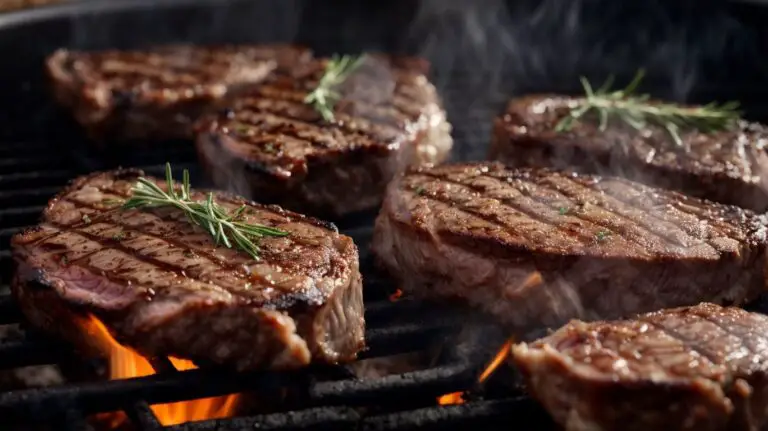How to Cook Gizzards on the Stove?
If you’ve ever been curious about cooking gizzards but didn’t know where to start, you’ve come to the right place.
In this article, we will explore what gizzards are, how to prepare them for cooking, the equipment needed to cook them on the stove, different cooking methods, how to tell if they are fully cooked, and tips for making the best gizzards.
Whether you’re a gizzard connoisseur or a beginner looking to try something new, this guide has got you covered.
So let’s get cooking!
Key Takeaways:
What Are Gizzards?
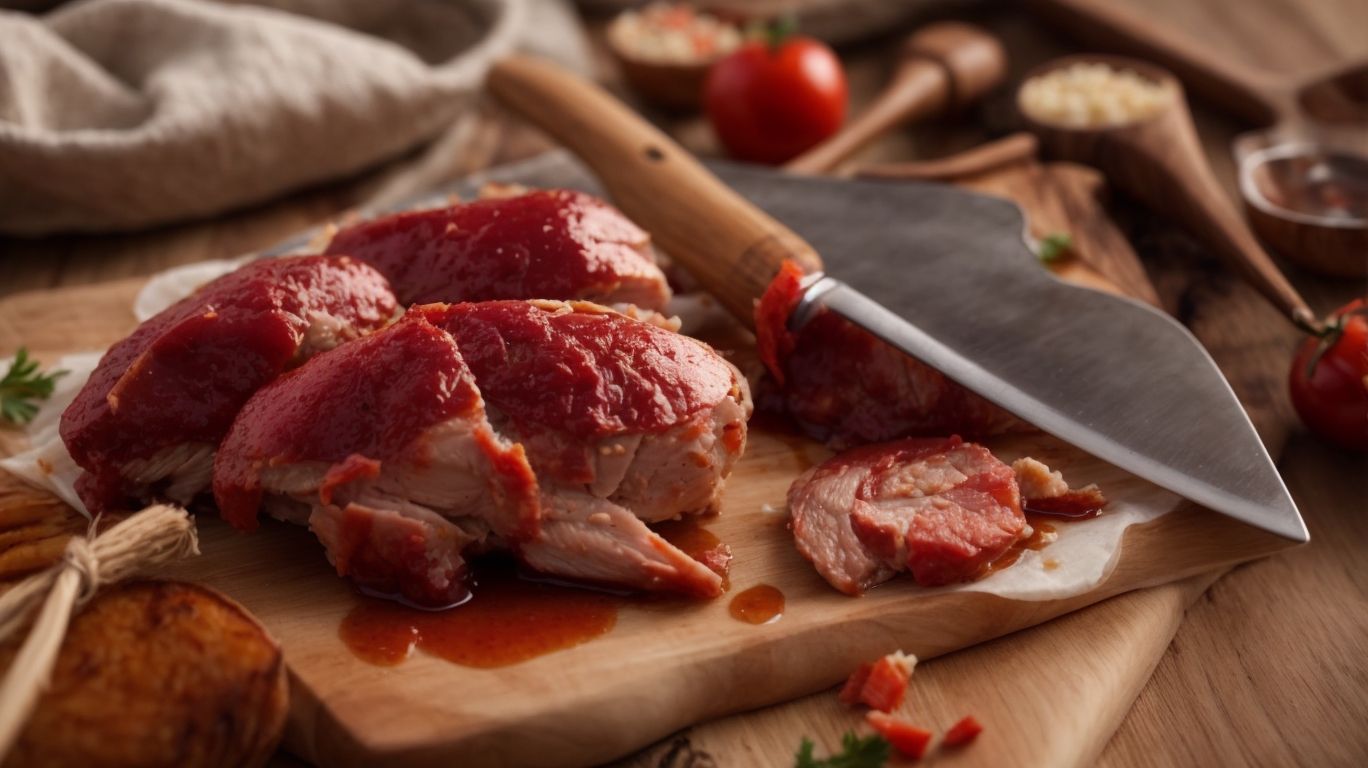
Credits: Poormet.Com – Christopher Robinson
Gizzards, often overlooked, are a flavorful and protein-rich part of the chicken that can be prepared in various delicious ways.
These small, yet mighty morsels offer a tender texture when cooked correctly, making them a versatile ingredient to work with in the kitchen. Whether you braise them until they are melt-in-your-mouth tender, bread and fry them for a crispy exterior, or simmer them slowly in a savory stew, gizzards can elevate any dish with their distinct taste. Their high protein content makes them a great choice for those looking to boost their protein intake in a delicious and satisfying way.
How to Prepare Gizzards for Cooking?
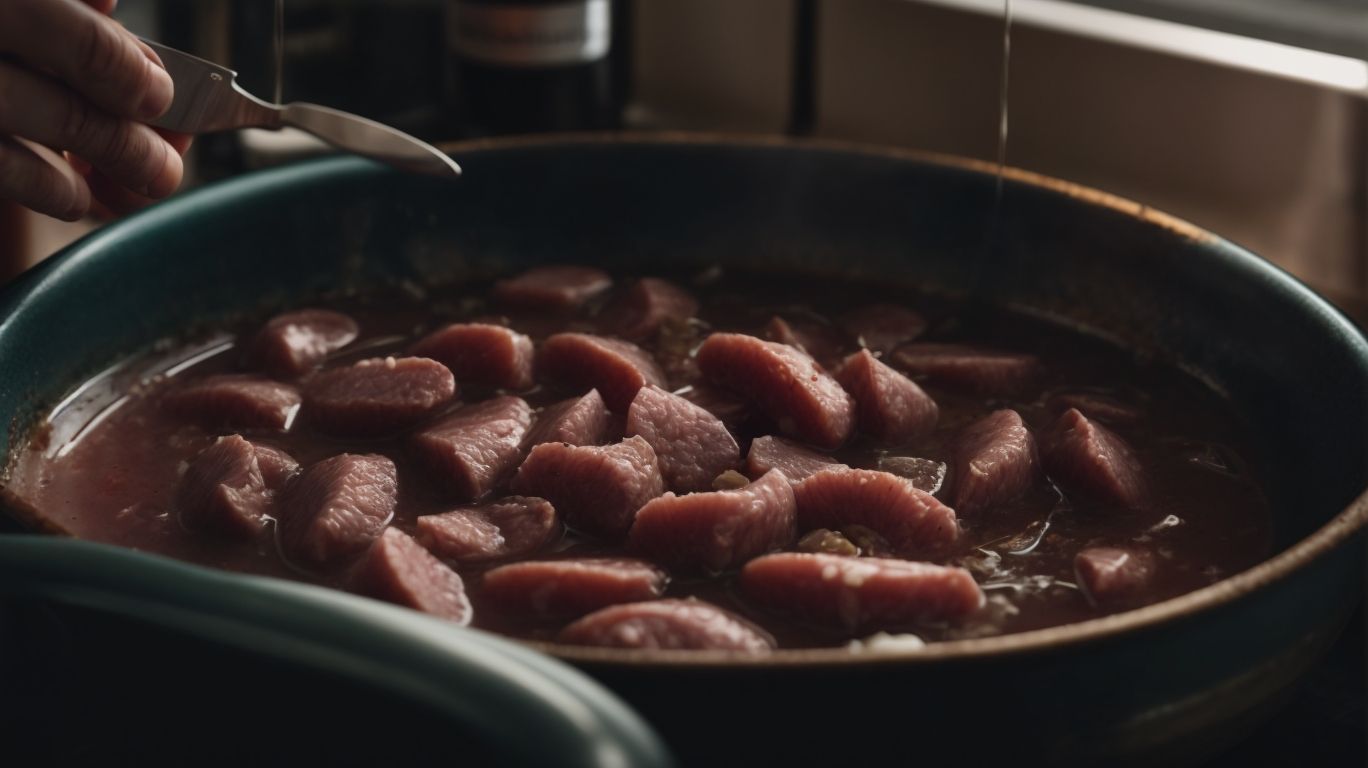
Credits: Poormet.Com – Brian King
Preparing gizzards for cooking involves several steps to ensure they are tender and full of flavor for your dish.
Start by cleaning the gizzards thoroughly under cold running water, removing any debris or impurities. Once cleaned, use a sharp knife to carefully remove the silver skin from the gizzards, ensuring to discard it properly. This silver skin can be tough and chewy if not removed, affecting the texture of your dish.
Next, cut the gizzards into bite-sized pieces, making sure they are evenly sized for even cooking. To enhance the flavor, consider marinating the gizzards in a mixture of vinegar, garlic, salt, and pepper for at least an hour before cooking. This will help tenderize the gizzards and infuse them with delicious flavors.
Cleaning the Gizzards
Cleaning the gizzards is a crucial step in the preparation process to ensure they are free of impurities and ready for cooking.
In terms of gizzards, giving them a thorough wash under running water can help get rid of any external debris, but to truly cleanse them of any hidden dirt or residue, the combination of salt and water is key. The abrasive nature of salt acts as a natural scrub, removing stubborn impurities that water alone may not be able to tackle. This cleaning process not only enhances the taste and texture of the gizzards but also ensures a higher standard of hygiene and food safety in your dish.
Removing the Silver Skin
Removing the silver skin from gizzards is essential to improve their texture and ensure a more enjoyable eating experience.
Gizzards are a flavorful and nutritious part of poultry, but if not prepared correctly, they can be tough and chewy. The silver skin, which is a thin membrane that covers the gizzard, can become tough and rubbery when cooked, disrupting the dish’s overall tenderness. To ensure your gizzards are tender and delicious, it’s crucial to remove this silver skin before cooking. This process involves gently peeling away the thin silver membrane to reveal the smooth muscle underneath. By doing so, you not only enhance the texture but also allow the flavors to penetrate the meat more effectively during cooking.
Cutting the Gizzards into Bite-Sized Pieces
Cutting the gizzards into bite-sized pieces allows for even cooking and enhances the presentation of your dish.
When cutting gizzards, it’s essential to ensure that each piece is roughly the same size. This uniformity ensures that all the gizzards cook at the same rate and results in a dish that not only tastes better but also looks visually appealing. To achieve this, start by trimming any excess fat or connective tissue from the gizzards. Then, carefully slice them into bite-sized portions, maintaining a consistent size throughout. This attention to detail will make a noticeable difference in the outcome of your dish, elevating it from ordinary to extraordinary.
What Equipment Do You Need to Cook Gizzards on the Stove?
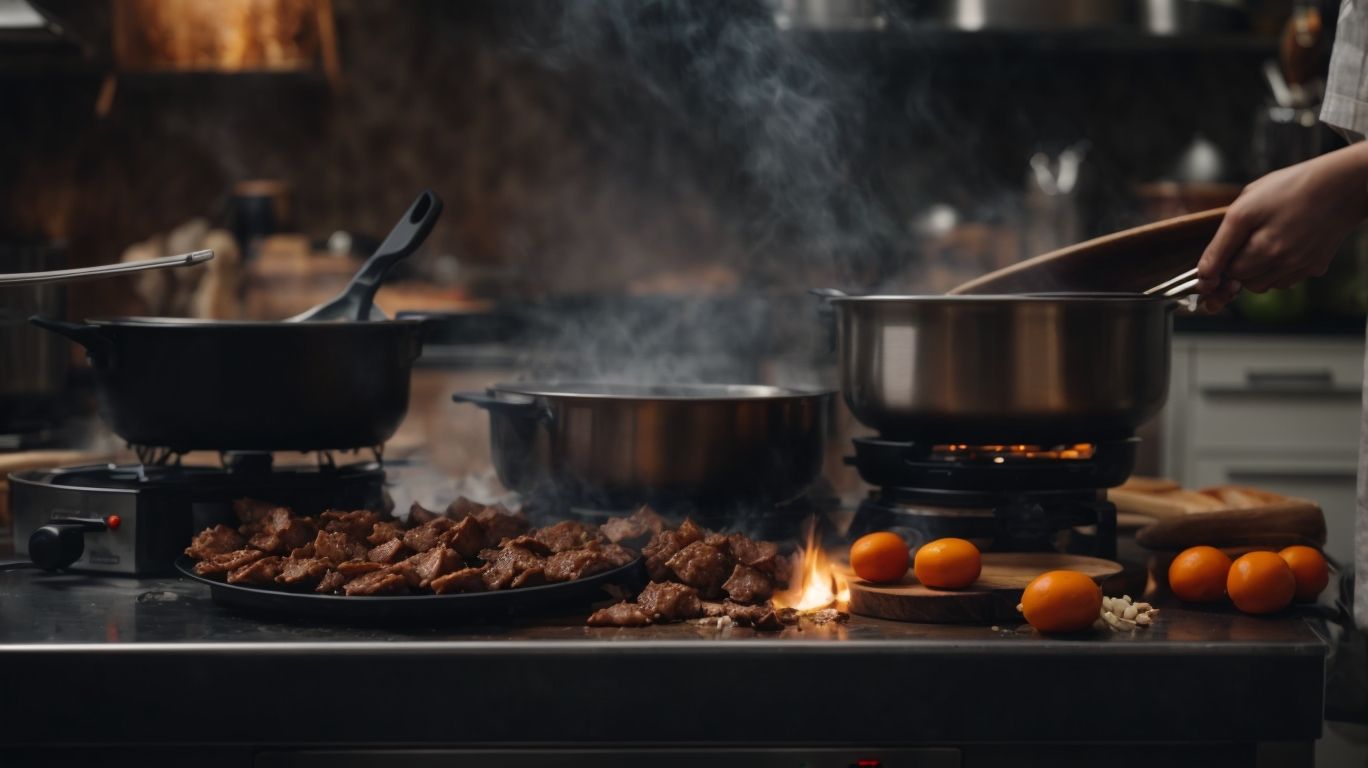
Credits: Poormet.Com – Charles Sanchez
To cook gizzards on the stove, you’ll need essential kitchen tools like a large saucepan or pot, a wooden spoon or tongs, and a strainer or colander for preparation.
Make sure to have a sharp knife for trimming the gizzards, a cutting board for a clean and organized workspace, and a meat thermometer to ensure they are cooked to the right temperature. Patience is key when cooking gizzards, as they need to be simmered gently for a tender texture.
Large Saucepan or Pot
A large saucepan or pot is essential for cooking gizzards on the stove due to the need for ample space and even heat distribution.
When cooking gizzards, the key is to ensure they are cooked evenly and thoroughly. Using a large saucepan or pot allows the gizzards to be spread out in a single layer, preventing overcrowding which can lead to uneven cooking. The material of the cookware plays a crucial role in heat distribution. A pot with a thick, heavy bottom minimizes hot spots and helps maintain a steady temperature, crucial for achieving perfectly cooked gizzards. Investing in the right-sized and quality pot can elevate your gizzard-cooking game to a whole new level.
Wooden Spoon or Tongs
A wooden spoon or tongs are handy tools for handling and stirring gizzards during the cooking process, ensuring they are cooked evenly.
When you’re working with gizzards on the stove, it’s crucial to have the right utensils to maneuver them effectively. These kitchen essentials allow you to easily turn the gizzards to ensure that all sides are cooked to perfection. Whether you’re sautéing or simmering the gizzards, the wooden spoon or tongs provide the ideal grip and leverage for effortless handling. Their versatility in stirring the ingredients in the pan helps distribute flavors evenly, enhancing the overall taste of the dish. Using the right utensil prevents the risk of damaging the gizzards while cooking, preserving their texture and juiciness.
Strainer or Colander
A strainer or colander is essential for draining and rinsing gizzards after preparation, ensuring they are clean and ready for cooking.
When preparing gizzards, they often have residual blood or other liquids that can affect the taste if not properly removed. The strainer or colander allows you to easily separate the gizzards from this excess liquid, resulting in a cleaner final dish.
Using a strainer or colander helps you inspect the gizzards for any impurities or unwanted bits that might have been missed during cleaning, enhancing the overall quality of your dish.
By incorporating this simple kitchen tool into your cooking routine, you can ensure that your gizzards are not only delicious but also hygienic.
How to Cook Gizzards on the Stove?
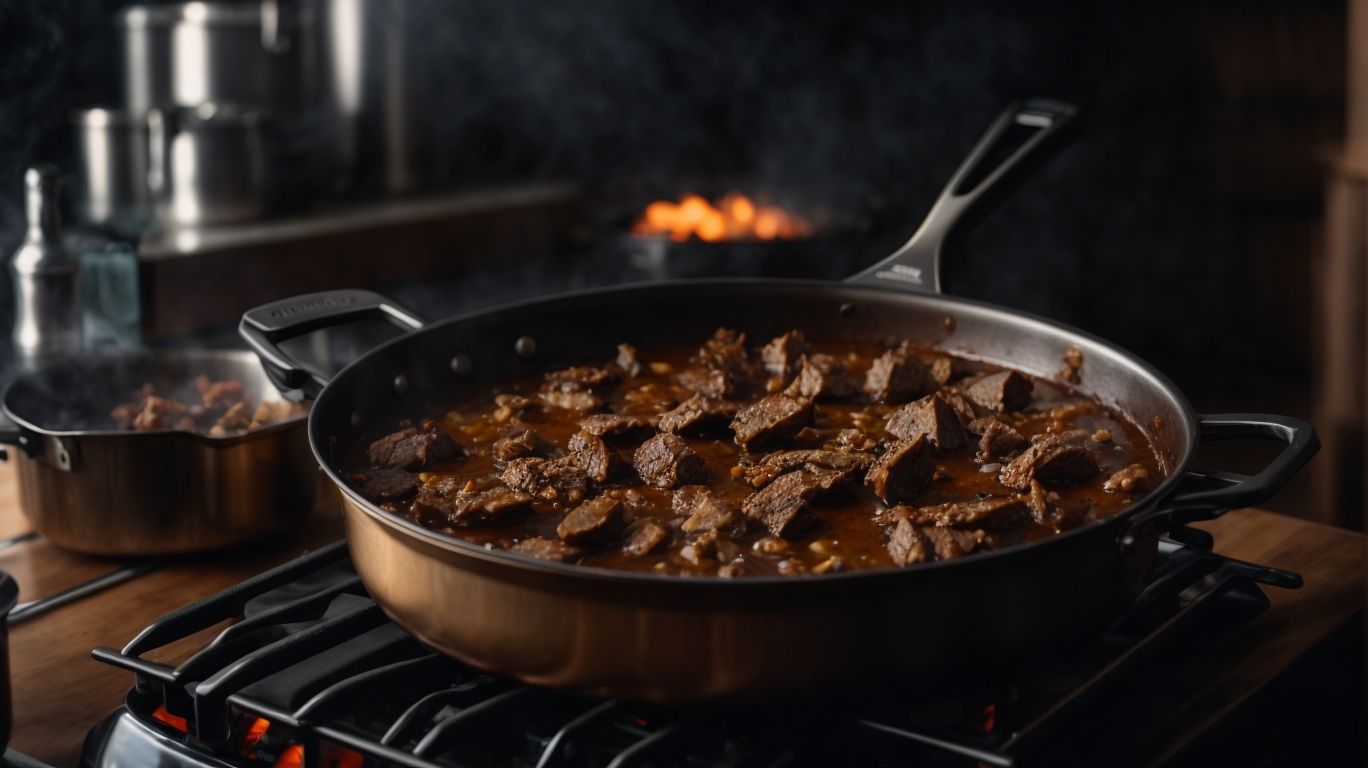
Credits: Poormet.Com – Terry Adams
Cooking gizzards on the stove can be done through various methods like boiling, sautéing, or braising, each offering unique flavors and textures.
In terms of boiling gizzards, it’s a straightforward process that involves simmering them in water until tender. Boiling helps in softening the gizzards while preserving their natural flavors.
On the other hand, sautéing gizzards involves cooking them quickly in a pan with some oil, allowing for a nice sear on the outside while keeping the inside moist and flavorful.
Braising gizzards means first searing them, then cooking in liquid on low heat for an extended period, resulting in tender, flavorful gizzards with a rich, concentrated taste.
Boiling Method
The boiling method is a simple way to cook gizzards on the stove, resulting in tender and protein-rich meat for various dishes.
When preparing gizzards, it’s important to start with a clean set. Begin by rinsing the gizzards thoroughly under cold water to remove any impurities. Next, fill a pot with water and add the gizzards along with some aromatics like onions, garlic, bay leaves, and peppercorns to enhance the flavor profile. Bring the water to a boil and then reduce the heat to let it simmer gently. Skim off any foam that rises to the surface to ensure a clear broth.
Cook the gizzards for about 1-1.5 hours until they are fork-tender. The slow simmering allows the collagen in the gizzards to break down, resulting in a tender and flavorful outcome. To further enhance the taste, consider adding spices like cumin, paprika, or thyme during the cooking process. Once done, let the gizzards cool slightly before slicing or incorporating them into your favorite recipes.
Sautéing Method
Sautéing gizzards on the stove allows for quick cooking with added flavors from ingredients like garlic, onions, and herbs.
When sautéing gizzards, it’s essential to start by cleaning them thoroughly to remove any impurities. Once cleaned, pat them dry and cut them into bite-sized pieces for even cooking. Heat a skillet over medium-high heat and add a drizzle of olive oil or butter to the pan. Toss in thinly sliced garlic cloves and diced onions, allowing them to caramelize and infuse their savory essence into the dish.
As the aromatics release their fragrance, add the gizzards to the pan. Sprinkle a pinch of salt, black pepper, and your favorite herbs such as thyme or rosemary to enhance the flavors. Sear the gizzards until they develop a crispy exterior and cook through, ensuring they remain tender and juicy.
Braising Method
Braising gizzards on the stove involves slow-cooking them in flavorful liquids like broth or wine, resulting in tender and savory dishes.
When braising gizzards, it’s essential to sear them first in a hot skillet to lock in flavor before adding your chosen liquid. The long, gentle cooking process allows the gizzards to become incredibly tender without losing their unique texture. Herbs and spices can be added to the braising liquid to infuse the meat with even more depth of flavor, making each bite rich and satisfying. Covering the pot while braising helps retain moisture and enhances the overall tenderness of the gizzards. It’s a method that transforms a tough cut of meat into a luxurious delicacy.
How to Tell If Gizzards Are Fully Cooked?
Determining if gizzards are fully cooked involves checking their texture, color, and internal temperature to ensure they are safe to eat.
In terms of texture, properly cooked gizzards should be tender and easy to chew, without being rubbery or tough. The color of the gizzards also plays a crucial role; they should have a consistent, opaque appearance throughout.
You can use a food thermometer to measure the internal temperature, which should reach at least 165°F (74°C) to guarantee that harmful bacteria are destroyed. To enhance the flavor, consider marinating the gizzards before cooking, which can also help tenderize them. You can achieve a delightful crunch by breading and frying the gizzards to perfection.
Tips for Making the Best Gizzards on the Stove
Enhance your gizzard dishes by marinating them for extra flavor, adding vegetables for a wholesome meal, and using a meat thermometer for precise cooking results.
Marinating your gizzards is not just about adding flavor; it’s also a great way to tenderize the meat and lock in moisture. Try using a combination of olive oil, herbs, and spices to create a delicious marinade. In terms of choosing vegetables to pair with your gizzards, think about textures and flavors that complement the richness of the meat. Vegetables like bell peppers, onions, and mushrooms work exceptionally well.
Another crucial aspect of cooking gizzards on the stove is maintaining the right temperature. This will ensure that your gizzards are cooked through without becoming tough. Using a meat thermometer to check the internal temperature can help you achieve that perfect balance.
Marinate the Gizzards for Extra Flavor
Marinating gizzards before cooking can infuse them with additional flavors and tenderize the meat for a more enjoyable eating experience.
When marinating gizzards, you open up a world of possibilities for enhancing their taste. Experimenting with different marinades gives you the opportunity to play with various flavors and create a dish that suits your preferences perfectly. Whether you opt for a classic herb-infused marinade or decide to go bold with spices and citrus, marinating gizzards allows you to customize the dish to your liking. Marination also helps in breaking down the tough fibers in the meat, resulting in a more tender and succulent final product.
Add Vegetables for a Complete Meal
Incorporating vegetables into your gizzard dishes not only adds flavor and texture but also boosts the nutritional value of your meal.
Vegetables are a powerhouse of essential vitamins, minerals, and antioxidants that are crucial for maintaining good health. By including vegetables in your gizzard recipes, you are not only adding vibrant colors and refreshing flavors but also increasing the fiber content of your dish. This, in turn, promotes better digestion and helps you feel full and satisfied for longer periods.
Vegetables bring a delightful balance to the rich and robust taste of gizzards, creating a well-rounded culinary experience for your taste buds. Whether you opt for crunchy bell peppers, leafy greens like spinach, or root vegetables like carrots, each addition contributes its unique array of nutrients to the meal, making it more complete and wholesome.
Use a Meat Thermometer for Accurate Cooking
Employing a meat thermometer when cooking gizzards ensures precise temperature control, leading to perfectly cooked and safe-to-eat dishes.
By monitoring the internal temperature with a meat thermometer, you can avoid the risk of undercooking, which may lead to foodborne illnesses. Keeping track of the optimal doneness level of gizzards is essential to achieve that juicy and flavorful outcome. With different cooking methods like frying, baking, or grilling, utilizing a meat thermometer ensures consistency in preparing gizzards to perfection. Remember that safety comes first when handling poultry products, and a thermometer is an essential tool in your kitchen arsenal to ensure that your culinary creations are both delicious and secure.
Conclusion
Cooking gizzards on the stove offers a delicious and protein-packed meal option that can be both nutritious and satisfying for individuals and families.
When gizzards are cooked on the stove, they develop a rich flavor profile that appeals to a wide range of palates. The versatility of gizzards allows them to be incorporated into various dishes, from soups and stews to stir-fries and curries. By simmering gizzards slowly on the stovetop, you can ensure they become tender and juicy, making them an excellent source of lean protein.



